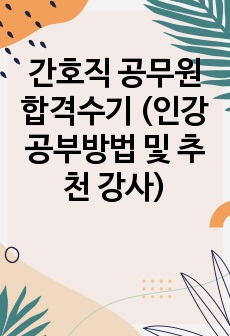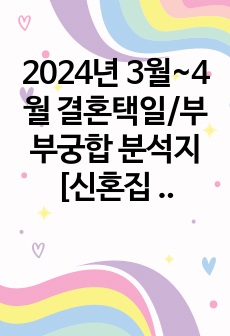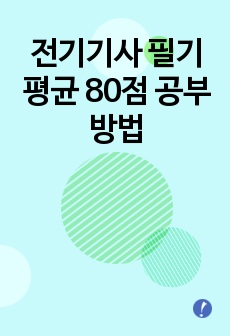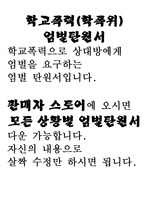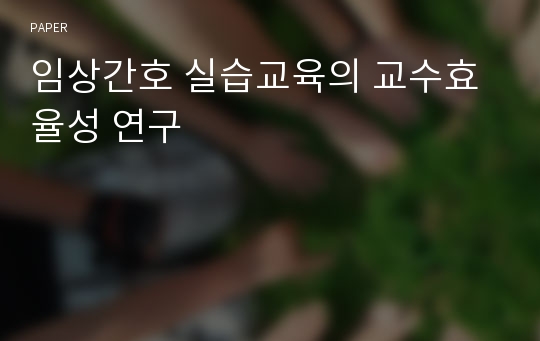* 본 문서는 배포용으로 복사 및 편집이 불가합니다.
서지정보
ㆍ발행기관 : 이화여자대학교 교과교육연구소
ㆍ수록지정보 : 교과교육학연구 / 3권 / 1호
ㆍ저자명 : 신경림, 김미애
ㆍ저자명 : 신경림, 김미애
목차
요약Ⅰ. 서론
Ⅱ. 문헌 고찰
Ⅲ. 연구 방법
Ⅳ. 연구결과 및 논의
Ⅴ. 결론 및 제언
참고문헌
Abstract
한국어 초록
본 연구는 임상실습교육을 받고 있는 간호학생들의 평정을 통하여 임상실습교육의 교수효율성을 측정함으로써 임상실습교육의 평가를 위한 기초자료를 제공하고 더 나아가 임상실습교육의 질을 개선하는데 기여하고자 시도하였다.연구 결과, 임상간호 실습교육의 교수 관련 현황에서 임상실습교육은 전임교수가 주로 지도한다고 했지만 전임교수의 참여도와 참여학습 내용은 1-2회, 집담회에만 참여하는 경우가 가장 많았다. 따라서 학생들은 실질적으로 임상 실습동안 전임교수로부터 학습목표 및 학생들의 요구에 부합되도록 충분한 지도를 받지 못하고 있음을 알 수 있었다.
임상실습교육의 교수효율성은 ‘중’ 정도이고, 요인별로 ‘의사소통술, 역할모델, 격려와 지지, 공정한 평가, 조직성, 전문능력, 전문지식, 협조’ 요인은 교수효율성이 ‘중상’으로 나타났으며 ‘대인관계술, 원조자, 유용성, 교수법, 적절한 배정’ 요인은 교수효율성이 ’중하’로 나타났다.
임상실습 교수별 교수효율성은 전임교수가 학생들의 실습만을 담당하는 과목별 실습조교보다 낮은 것으로 평가되었다. 특히 ‘친밀감, 열의, 융통성, 원조자, 유용성, 대인관계술, 교수법, 적절한 배정’ 요인은 ‘중하’의 평가를 받았다.
간호학생들은 간호에서 전문지식과 실무경험을 모두 중요시하고 있으며, 이론과 실제를 잘 연결시켜 줄 수 있는 전임교수를 가장 이상적인 임상실습지도자로 원하고 있었다. 그러나 전임교수는 바쁘고 실무에 약하다는 이유 때문에 차선책으로 임상경험이 풍부하고 과목별 실습 중 좀 더 가까이에서 학생들을 지도해 주고 있는 과목별 실습조교를 실습지도자로 택했고 실제로 교수효율성 평가에서도 높은 점수를 준 것이라고 생각한다.
영어 초록
The purpose of this study was to contribute to the development of clinical instruction by students' ratings of teaching effectiveness in clinical nursing education.The subjects were comprised of graduating class 618 students from 24 nursing colleges in the nation.
These data were collected from conducting questionnaires for 34 day. period from March 15 to April 17, 1996.
The instruments used in this study were "general characteristics & status of clinical nursing education" developed by the researcher and "Instrument to Measure Effectiveness of Clinical Instructors" by Reeve(1994).
The Collected data were analyzed by the actual number, its percentage, the mean, standard deviation, ANOVA & MANOVA.
The 50 questions used in the questionnaire were categorized into 13 components subject to factor analysis.
The 13 components were interpersonal relationships, communication skills, role model, resource for students, favorable to students, encouraging to think for selves, teaching methods, evaluation finding assignments for objectives, organization of subject matter, professional competence, knowledge of subject matter & working with agency personnel.
The results of this study are as follows
1. Status of clinical nursing education:
1) Clinical nursing education were led by nursing professors(44.9%), a team of both nursing professor & head nurse(6.8%), instructors from specific hospital(15.1 %), instructors for a specific subject(14.6%), & head nurse(6.8%). For 3-year program students, 34.6% of the clinical nursing education were led by instructors from specific hospital & 51.4% of the education by nursing professors for Bachelor's program.
2) The longest clinical education performed lasted 11 days, & the highest number of visits led by clinical teachers during any education period was 1-2 visits of 59.7%.
3) The contents for clinical education comprised of Conference being the most frequent of 34.5%; a combination of Nursing skills, Orientation, Conference etc.22.0%; Nursing process 21.7%; Orientation 13.5%; Inspection(making rounds) 6.4%, & Nursing skills of 2% being the least frequent.
4) 82.9% of the nursing students responded that lectures & clinical education were held independently.
5) 54.2% of nursing students felt that their clinical teachers played a role-model, the reason was based on the clinical teacher's professional knowledge & clinical experience. However, the judgement was further based on how well the teachers applied their knowledge & experience.
6) Students' preference of clinical teachers from the highest to the lowest were instructors for a specific subject being the most desired(44.9%) followed by nursing professor, head nurse, a team of both nursing professor & head nurse, & instructors from specific hospital being the least desired.
7) Students felt that the qualification for clinical teachers should be at least a master's degree holder and 5 or more years of clinical experience. The reason they felt was because knowledge & experience are imperative for professional education.
2. Clinical teaching effectiveness:
The total points for teaching effectiveness was 147.97(mean of 2.95 ± 0.98) where the total score is considered to be an average rating.
3. Teaching effectiveness as status of clinical nursing education:
1) The score ratings for the clinical instructors from the highest to the lowest were as follows ; instructors for a specific subject, instructors from specific hospitals, a team of both nursing professors & head nurses, nursing professors, head nurses, which resulted in significant difference(F=4.53, P<0.001).
2) The rating scores based on the teaching program from the highest to the lowest were as follows; nursing skills, nursing process, a combination of nursing skills, orientation, conference etc., conferences, orientation, inspection, which resulted in Significant difference(F=10.97, P<0.001).
4. Based on 13 categorized components from the questionnaires, questions related to communication skills scored the highest points of 3.20 where inquiries regarding resource for students scored the lowest points of 2.38. Inquiries on role model, encouraging to think for selves, evaluation, organization of subject matter, professional competence, knowledge of subject matter & working with agency personnel were scored slightly higher than the . average and interpersonal relationships, favorable to students, teaching methods & finding assignments for objectives scored slightly lower than the average.
5. Among the 13 categorial components from the questionnaire, Interpersonal relationship(F=3.18, P<0.05), Communication skills(F=3.88, P<0.05), Resource for students(F=5.41, P<0.001), Encouraging to think for selves(F=2.65, P<0.05), Evaluation(F=2.74, P<0.05), Teaching method(F=4.21, P<0.01), Finding assignment for objectives(F=5.23, P<0.001), Organization of subject matter(F=3.38, P<0.01), Professional competence(F=3.37, P<0.01), & Working with agency personnel(F=5.70, P<0.001), instructors for a specific subject scored the highest points and head nurse scored the lowest, which resulted in Significant difference. Favorable for students, instructors for a specific subject scored highest points and nursing professor scored the lowest, which resulted in significant deference (F=5.39, P<0.001). Role model & Professional competence, instructors for a specific subject scored the highest points and head nurse scored the lowest, with minimum variation(F=1.29, P>0.05; F=1.64, P>0.05).
6. Based on 13 categorial components as a whole, the highest points scored among the 5 groups of clinical teachers was instructors for a specific subject and the lowest, by head nurse(F=1.94, P<0.001). A team of both nursing professor & head nurse attained higher score in clinical education than their independent education.
참고 자료
없음"교과교육학연구"의 다른 논문
 현행 고등학교 중국어 교과서 어휘 연구 : 選定과 頻度를 中心으로28페이지
현행 고등학교 중국어 교과서 어휘 연구 : 選定과 頻度를 中心으로28페이지 외국인을 위한 한국어교육 이론의 지평17페이지
외국인을 위한 한국어교육 이론의 지평17페이지 의사 소통 능력 신장을 위한 교수 방법 및 학습 자료 연구 : 독일어 수업을 중심으로17페이지
의사 소통 능력 신장을 위한 교수 방법 및 학습 자료 연구 : 독일어 수업을 중심으로17페이지 이슬람권에서 기독교적 종교교육의 방법16페이지
이슬람권에서 기독교적 종교교육의 방법16페이지 토론식 문학 수업을 통한 학생 인성 교육 : 독일 표현주의 작가 발터 하젠클레버의 『아들』을 중심으..21페이지
토론식 문학 수업을 통한 학생 인성 교육 : 독일 표현주의 작가 발터 하젠클레버의 『아들』을 중심으..21페이지 학교도서관 매체센터의 협동교수 프로그램 모형개발 연구14페이지
학교도서관 매체센터의 협동교수 프로그램 모형개발 연구14페이지 컴퓨터 그래픽스 교육 운영 실태조사 연구 : 실업계 고등학교 상업디자인과를 중심으로22페이지
컴퓨터 그래픽스 교육 운영 실태조사 연구 : 실업계 고등학교 상업디자인과를 중심으로22페이지 서울시 초등학교 미술교육 현황22페이지
서울시 초등학교 미술교육 현황22페이지 기타계 예술계열 고등학교 기악 전공생의 전공악기 선택에 영향을 미치는 제반 요인에 관한 연구26페이지
기타계 예술계열 고등학교 기악 전공생의 전공악기 선택에 영향을 미치는 제반 요인에 관한 연구26페이지 고등학교 음악수업에 적절한 한국대중가요 선택에 대한 연구18페이지
고등학교 음악수업에 적절한 한국대중가요 선택에 대한 연구18페이지










